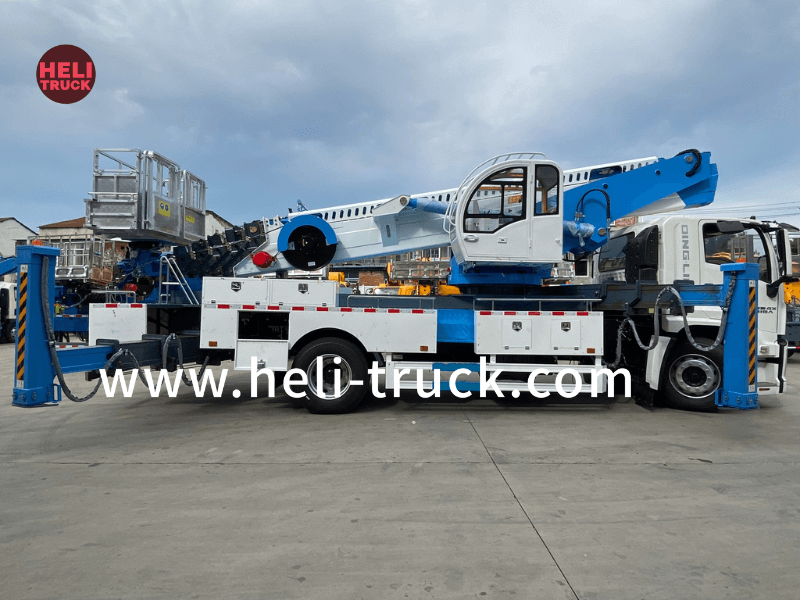Introduction
Garbage trucks play a vital role in the waste management process by collecting and disposing of waste from residential, commercial, and industrial areas. These specialized vehicles are equipped with various waste disposal methods to efficiently handle different types of waste materials. In this article, we will explore the waste disposal methods of garbage trucks in detail, including the types of garbage trucks, collection methods, and disposal techniques.
Types of Garbage Trucks
There are several types of garbage trucks designed to handle specific waste disposal needs. The most common types include:
1. Rear Loader Trucks: Rear loader trucks are equipped with a hydraulic compactor at the rear of the vehicle. Waste collectors manually load the waste into the compactor, which then compresses the garbage to maximize the truck's capacity. Once the truck is full, the compactor pushes the waste towards the rear of the truck for disposal at a designated facility.
2. Front Loader Trucks: Front loader trucks are commonly used for commercial waste collection. These trucks feature a front-loading mechanism that allows waste containers to be picked up and emptied directly into the truck's hopper. The waste is then compacted inside the truck for transport to a disposal site.
3. Side Loader Trucks: Side loader trucks are equipped with a mechanical arm that extends from the side of the vehicle to lift and empty waste containers. These trucks are ideal for residential waste collection in areas with limited space for maneuvering. The waste is compacted inside the truck for efficient disposal.
4. Roll-Off Trucks: Roll-off trucks are used for collecting and transporting large volumes of waste, such as construction debris and bulky items. These trucks feature a rectangular container that rolls on and off the truck bed, allowing for easy loading and unloading of waste materials. Roll-off trucks are typically used for temporary waste disposal needs, such as construction projects and clean-up activities.

Collection Methods
Garbage trucks use different collection methods to gather waste from various sources. The two primary collection methods are manual and automated collection.
1. Manual Collection: In manual collection, waste collectors load the garbage into the truck manually. This method is commonly used in residential areas where waste containers are placed curbside for collection. Waste collectors lift and empty the containers into the truck's hopper, which then compacts the waste for transport.
2. Automated Collection: Automated collection utilizes specialized garbage trucks equipped with robotic arms or mechanical lifters to pick up and empty waste containers. This method is commonly used for commercial waste collection, where large dumpsters or bins are emptied directly into the truck's hopper. Automated collection improves efficiency and reduces the risk of manual handling injuries for waste collectors.
Disposal Techniques
Once the waste is collected and compacted inside the garbage truck, it is transported to a designated disposal facility for further processing. There are several disposal techniques used to manage waste effectively:
1. Landfill Disposal: Landfill disposal is the most common method of waste disposal, where the compacted waste is transported to a landfill site for burial. Landfills are engineered facilities designed to contain and manage waste materials safely. The waste is compacted and covered with soil to minimize odor, prevent contamination, and reduce the risk of environmental pollution.
2. Recycling: Recycling is an essential waste disposal technique that involves sorting and processing waste materials to recover valuable resources. Garbage trucks equipped with recycling compartments separate recyclable materials, such as paper, plastic, glass, and metal, from general waste. These materials are then sent to recycling facilities for processing and reuse, reducing the amount of waste sent to landfills and conserving natural resources.
3. Waste-to-Energy: Waste-to-energy is a sustainable waste disposal technique that involves converting waste materials into energy through incineration or other thermal processes. Garbage trucks transport waste to waste-to-energy facilities, where the waste is burned at high temperatures to generate electricity or heat. This process reduces the volume of waste sent to landfills, minimizes greenhouse gas emissions, and produces renewable energy.
4. Composting: Composting is a natural waste disposal technique that involves decomposing organic waste materials, such as food scraps and yard waste, into nutrient-rich compost. Some garbage trucks are equipped with composting compartments to separate organic waste for composting. The compost can be used as a soil conditioner or fertilizer for agriculture and landscaping, diverting organic waste from landfills and promoting sustainability.
5. Flatbed truck load securement best practices : Hazardous waste, such as chemicals, paints, and electronic waste, requires special handling and disposal methods due to its toxic nature. Garbage trucks equipped with hazardous waste compartments transport these materials to specialized facilities for proper treatment and disposal. Hazardous waste disposal helps protect the environment and human health from the harmful effects of toxic substances.
Conclusion
Garbage trucks play a crucial role in waste management by collecting and disposing of waste materials from various sources. The waste disposal methods of garbage trucks, including collection techniques and disposal techniques, are essential for maintaining a clean and sustainable environment. By understanding the different types of garbage trucks, collection methods, and disposal techniques, we can promote efficient waste management practices and reduce the impact of waste on the environment. It is important to support waste reduction, recycling, and proper waste disposal to create a healthier and more sustainable future for generations to come.
